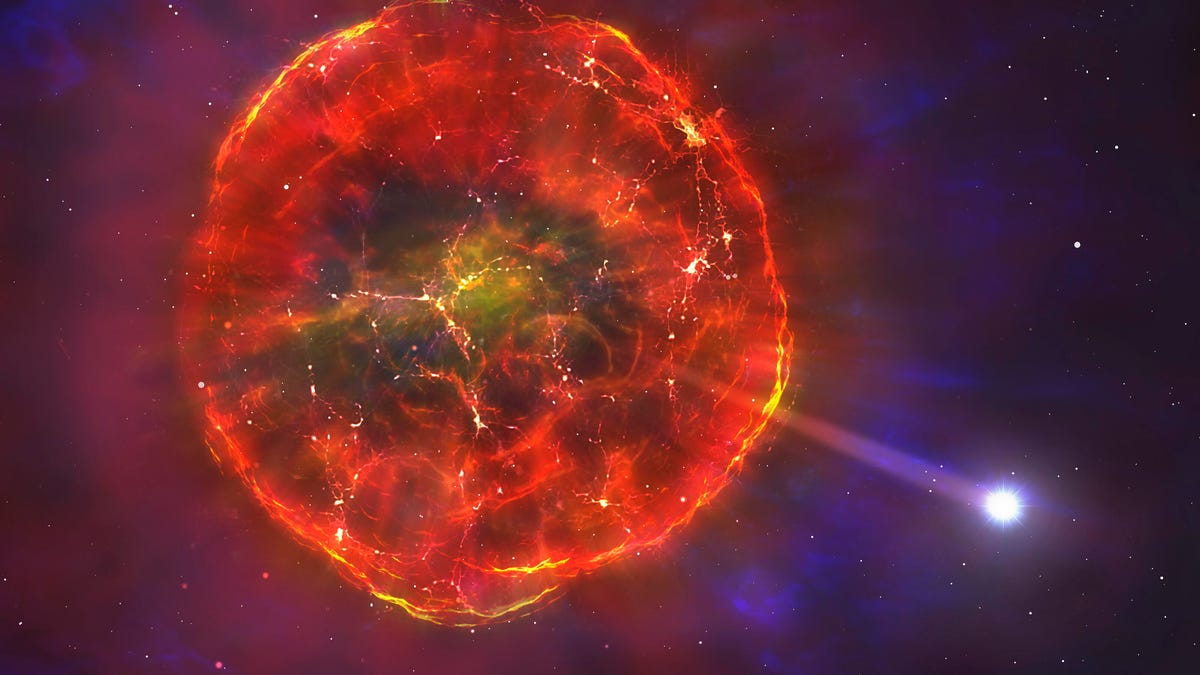New type of supernova sends exploding star speeding across the Milky Way
Scientists think a binary star system may have had a dramatic split resulting in some real cosmic fireworks.

An illustration of the white dwarf and other material being ejected by a supernova blast.
Astronomers say they may have discovered a new type of supernova explosion, which sent a white dwarf star tearing across the galaxy at 560,000 miles per hour.
Scientists think a pair of stars underwent a partial supernova and survived, likely blasting themselves across the Milky Way in different directions in the process.
"It must have come from some kind of close binary system and it must have undergone thermonuclear ignition," Boris Gaensicke, physics professor at the University of Warwick, explained in a statement. "It would have been a type of supernova, but of a kind that that we haven't seen before."
Gaensicke is lead author of a paper on the discovery to be published Wednesday in Monthly Notices of the Royal Astronomical Society.
Finding evidence of a new type of supernova is already significant, but it also raises the possibility more stars might be ripping around on Thelma and Louise-style road trips. This would be a rarity among the billions of stars in the universe, most of which we presume are in motion but relatively stable like our sun.
The speeding star is designated SDSS J1240+6710 and was originally discovered in 2015. Scientists made additional observations with NASA's Hubble Space Telescope and measured the star's composition and speed to help reveal its explosive backstory.
"We are now discovering that there are different types of white dwarf that survive supernovae under different conditions, and using the compositions, masses and velocities that they have, we can figure out what type of supernova they have undergone," Gaensicke added. "There is clearly a whole zoo out there."

